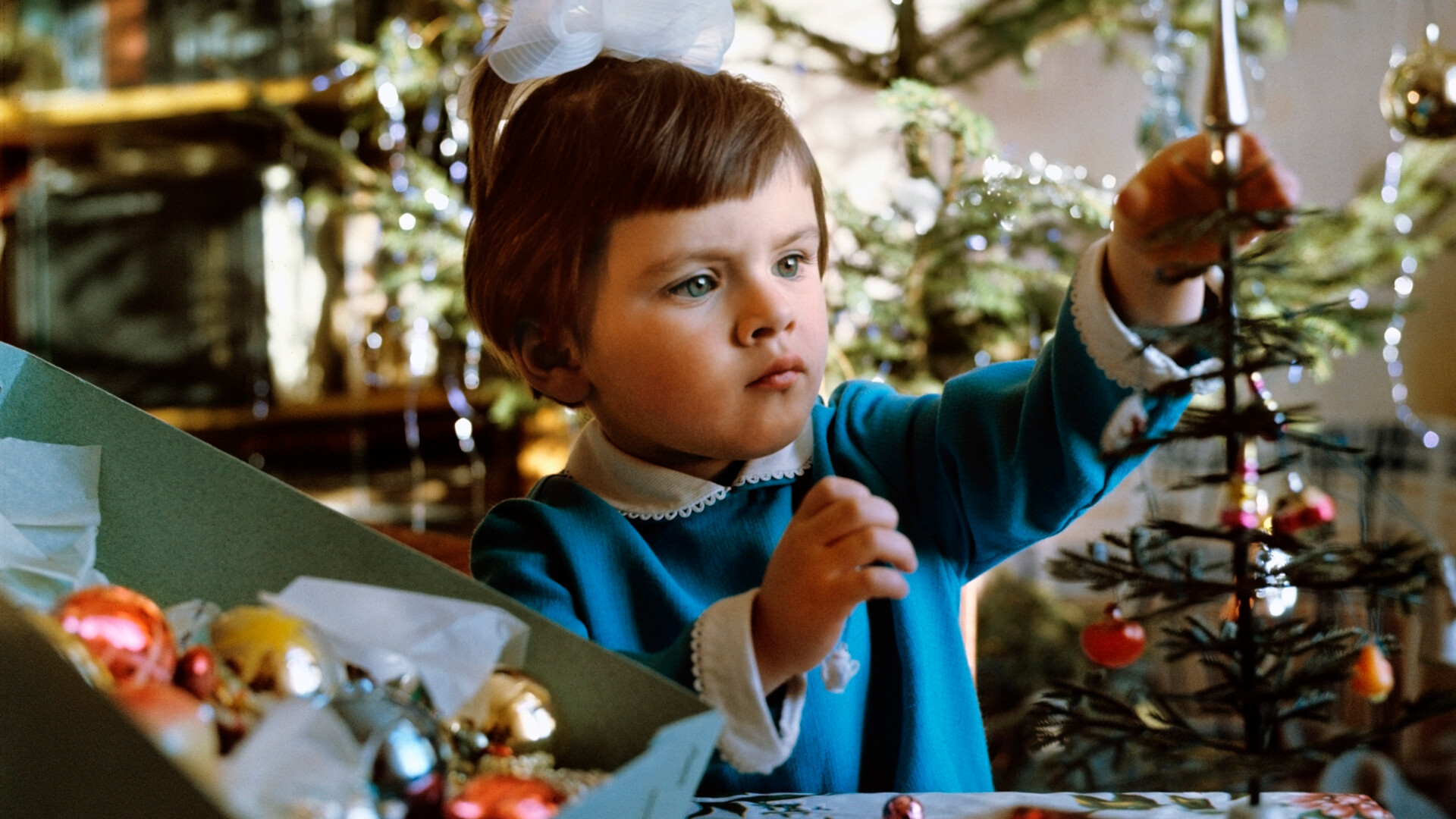
Girl decorating a Christmas tree, 1973.
Valery Shustov/SputnikThe history of the USSR has always been reflected in Christmas tree decorations, as many of them were dedicated to important events of the time. In the 1930s, Christmas trees were decorated with figures of pioneers and Red Army soldiers. In the 1940s, military themed toys and homemade decorations came into use. Afterwards came vegetables, fruits, animals, cosmonauts and so on. We have collected the most exciting ones from every decade!
From 1929 to 1935, the USSR banned all New Year’s celebrations. Even decorating Christmas trees was frowned upon. However, as soon as Stalin’s ban was lifted, it was necessary to urgently restore the production of Christmas tree toys. The decorations of the time became, among other things, a means of propaganda. Christmas trees were decorated with figures of pioneers and soldiers and other ornaments, dedicated to the Red Army. Garland-flags with images of soldiers, sailors and scouts were used quite frequently.
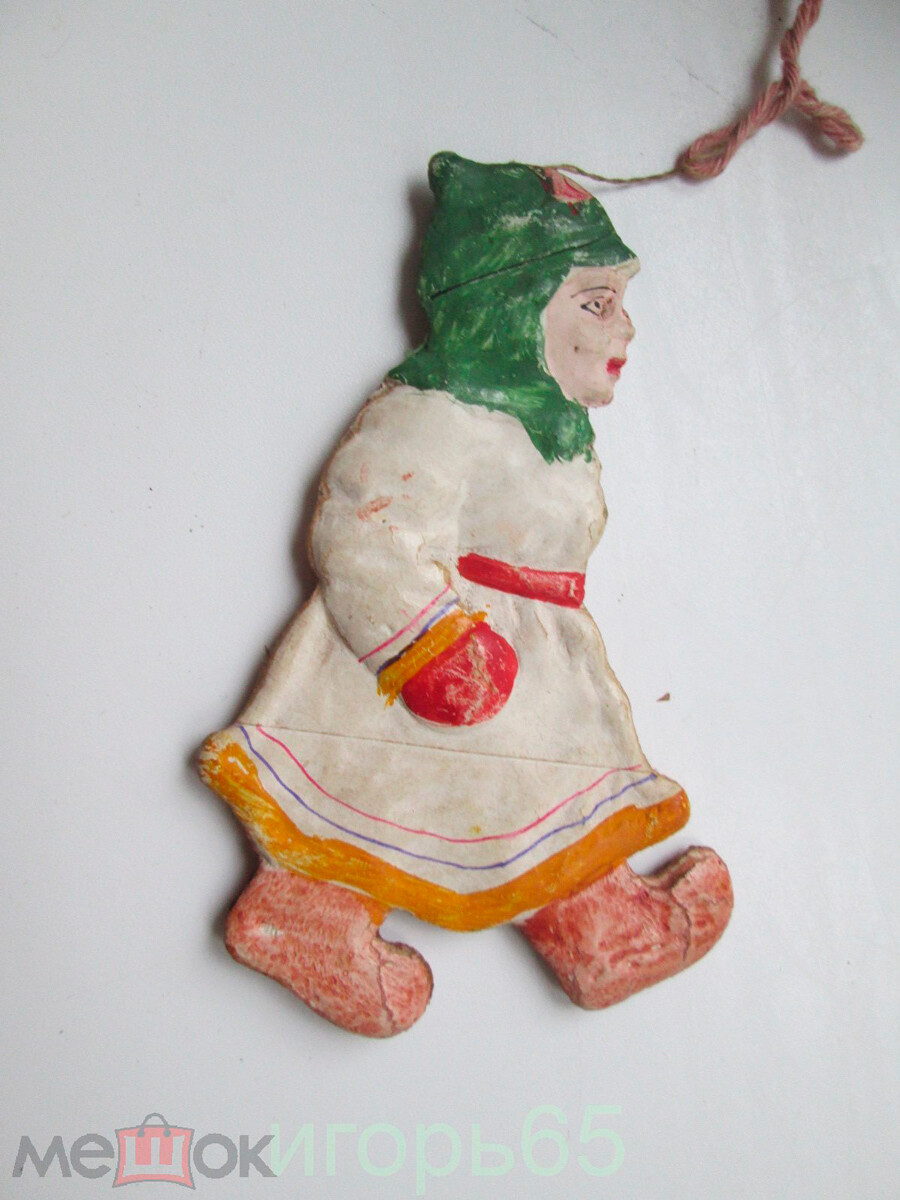
Tree toy 'Budenovets'.
МешокThe ornaments were dedicated not only to abstract characters. For example, a common decoration was a figure of border guard officer Nikita Karatsupa, who became famous for detaining 338 trespassers, eliminating 129 spies and saboteurs and creating his own school for training working dogs.
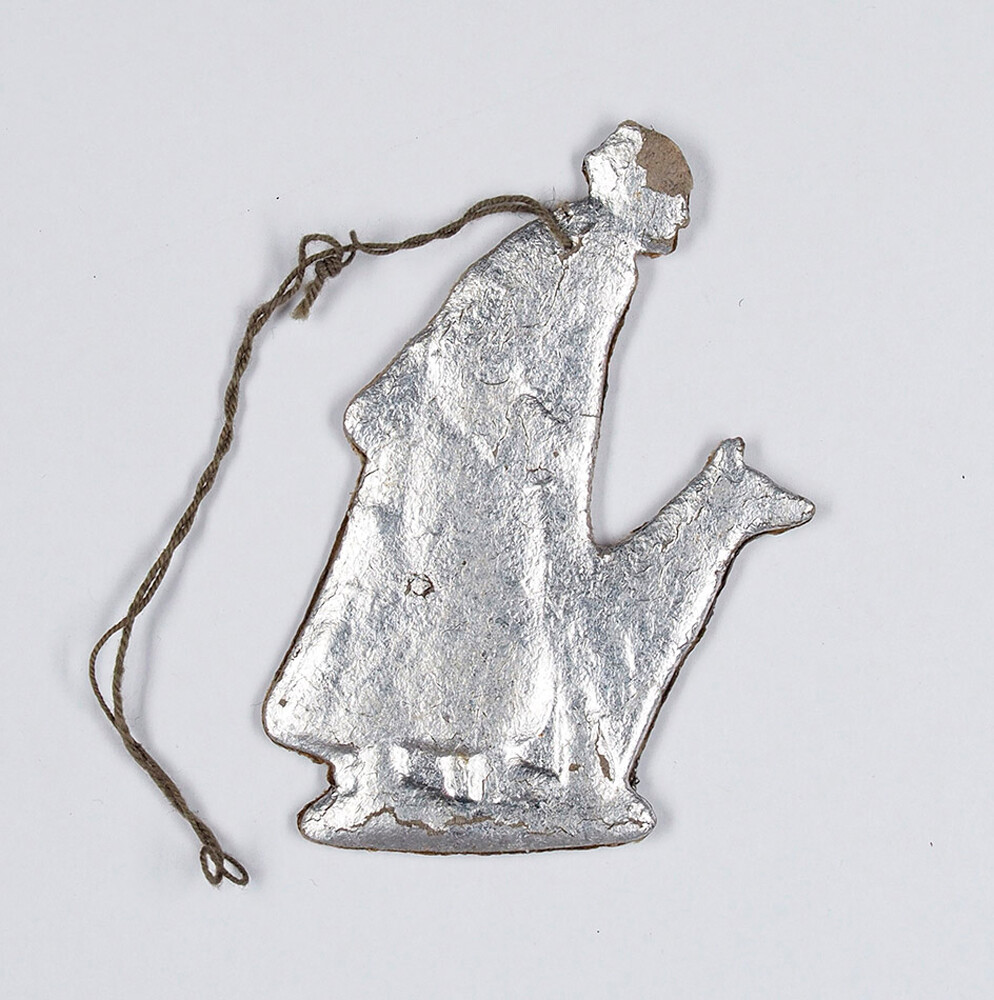
Tree toy 'Officer Karatsupa with his dog', 1939.
ЛитфондIn the 1930s, zeppelin construction was actively developing, and in 1937, a Soviet zeppelin broke the world record for the longest flight, staying in the air for 130 hours and 27 minutes. This zeppelin trend left a mark on Christmas ornaments as well. Toy zeppelins were made of cardboard and papier-mâché, and in the 1950s glass models appeared.
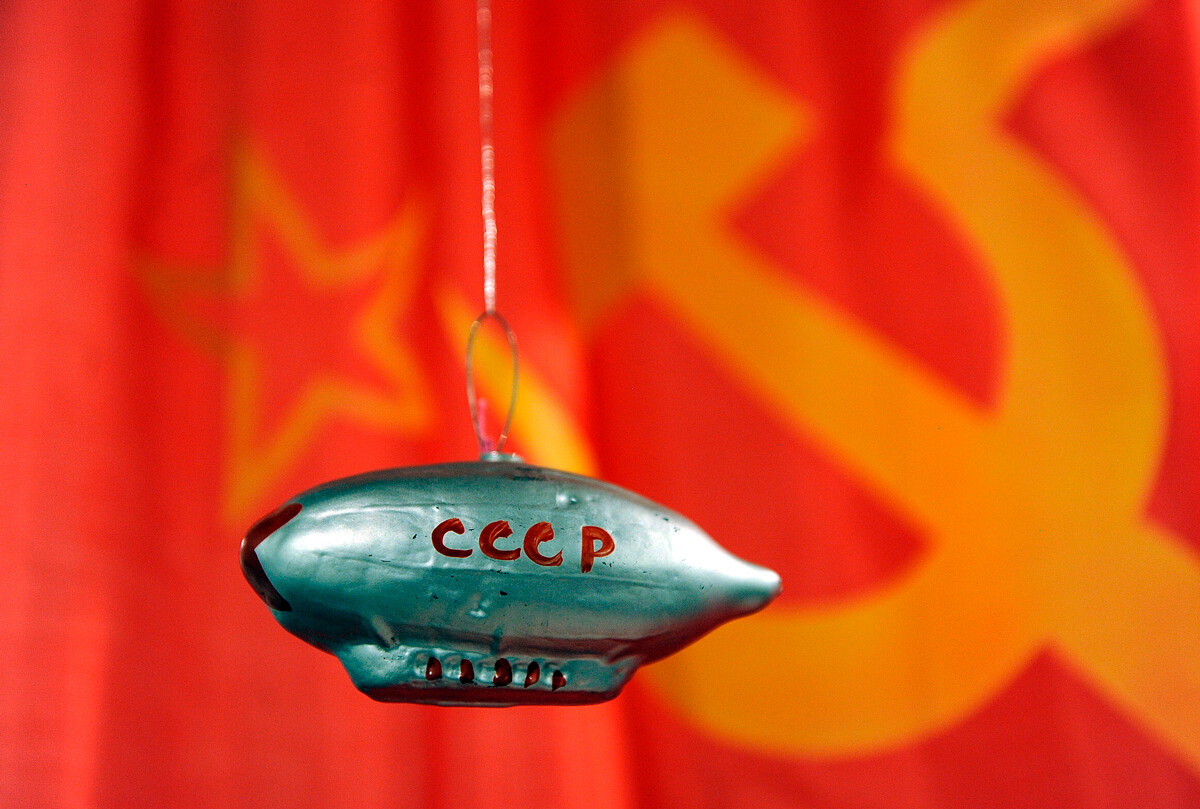
Tree toy depicting a zeppelin.
Максим Новиков /TASSOf course, star-shaped ornaments depicting the hammer and sickle were also common. Even the top of the tree, symbolizing the Star of Bethlehem, was replaced by the ideologically correct version in the form of a Red Star.
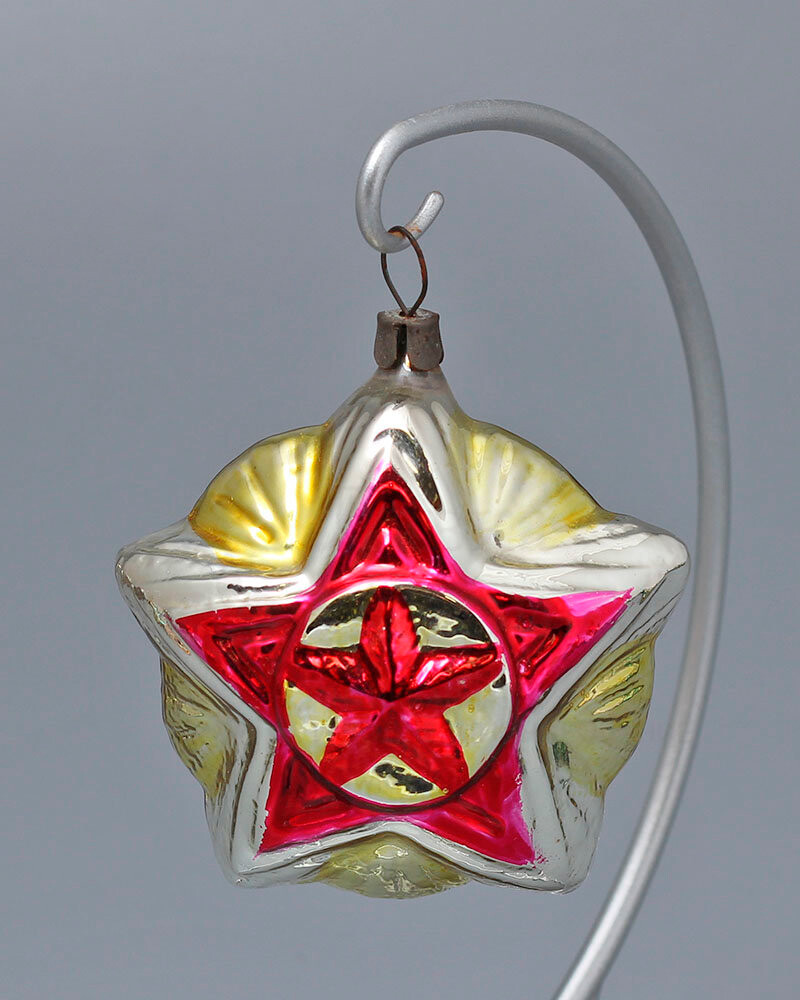
Tree toy 'Red star', glass, 1930-50s.
Лавка стариныDuring World War II, decorations were often centered on military themes: there was even a toy depicting a paramedic dog.
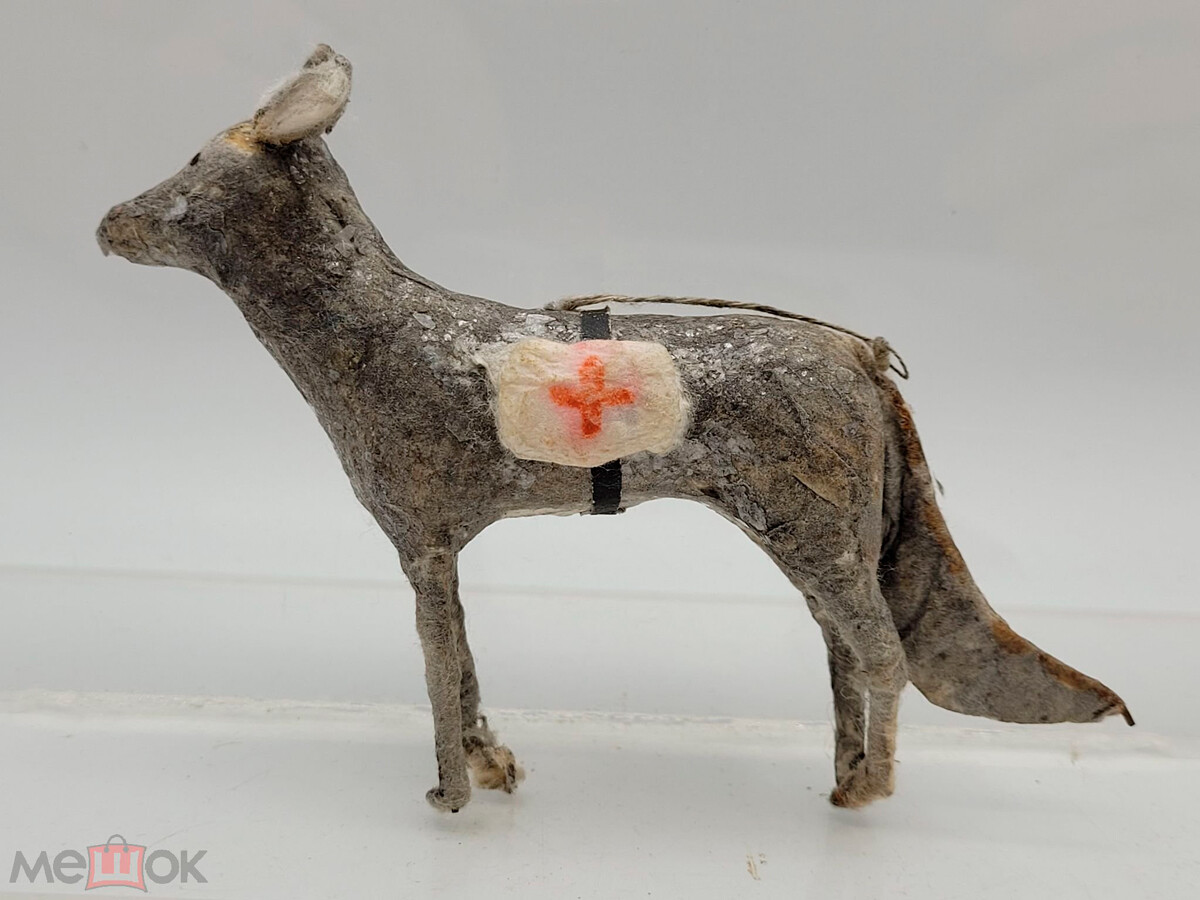
Tree toy 'Paramedic dog'.
Мешок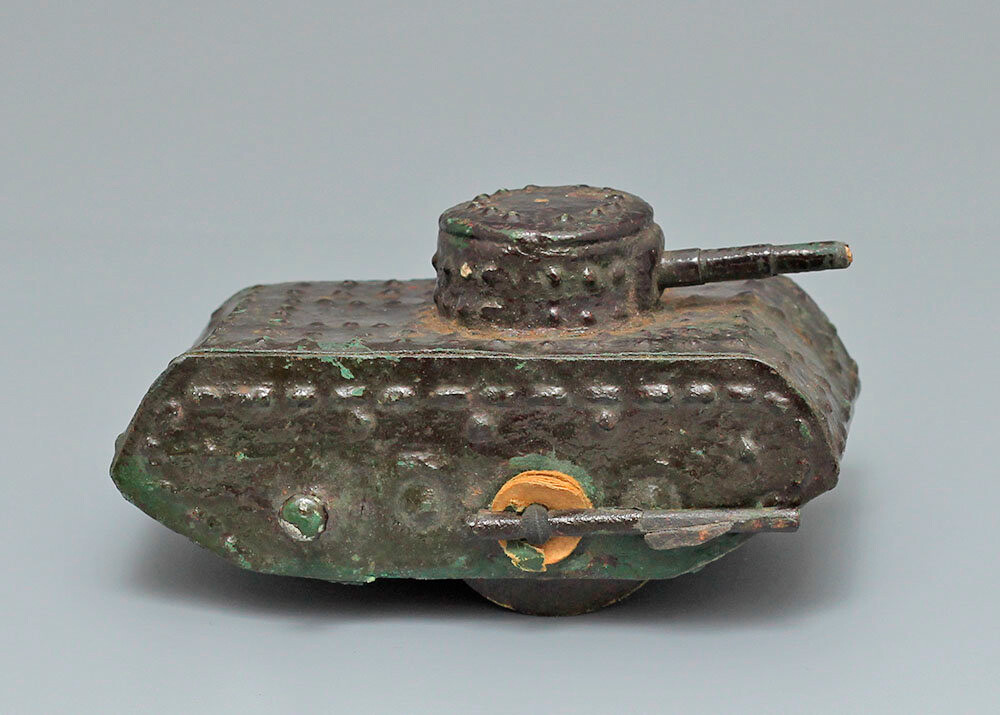
Tree toy 'Tank'.
Лавка стариныBut more commonly there were homemade ornaments: due to shortages, they were made from whatever materials were available. Behind the front lines, people painted burnt-out lightbulbs and made figures out of barbed wire, while at the front, soldiers painted shell casings and used shoulder straps.
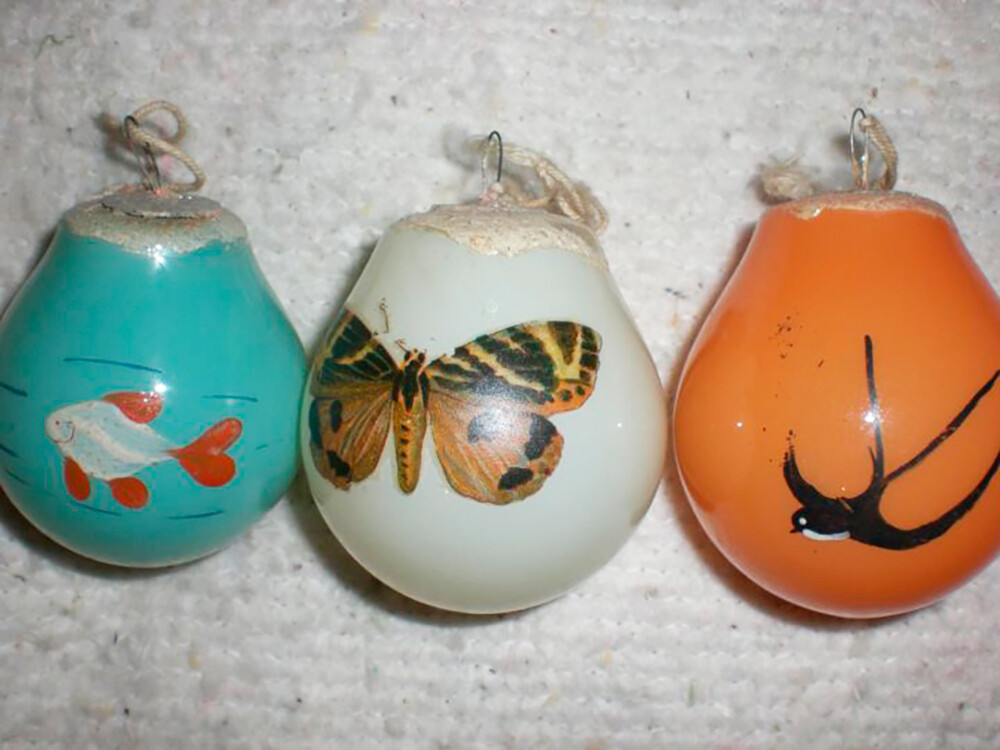
Wartime tree toys made from light bulbs.
ЮлаAfter the war, production went back to normal. In 1949, to mark the 150th anniversary of Alexander Pushkin, several sets were produced dedicated to his stories - ‘Ruslan and Lyudmila’, ‘The Tale of Tsar Saltan’ and ‘The Golden Fish’.
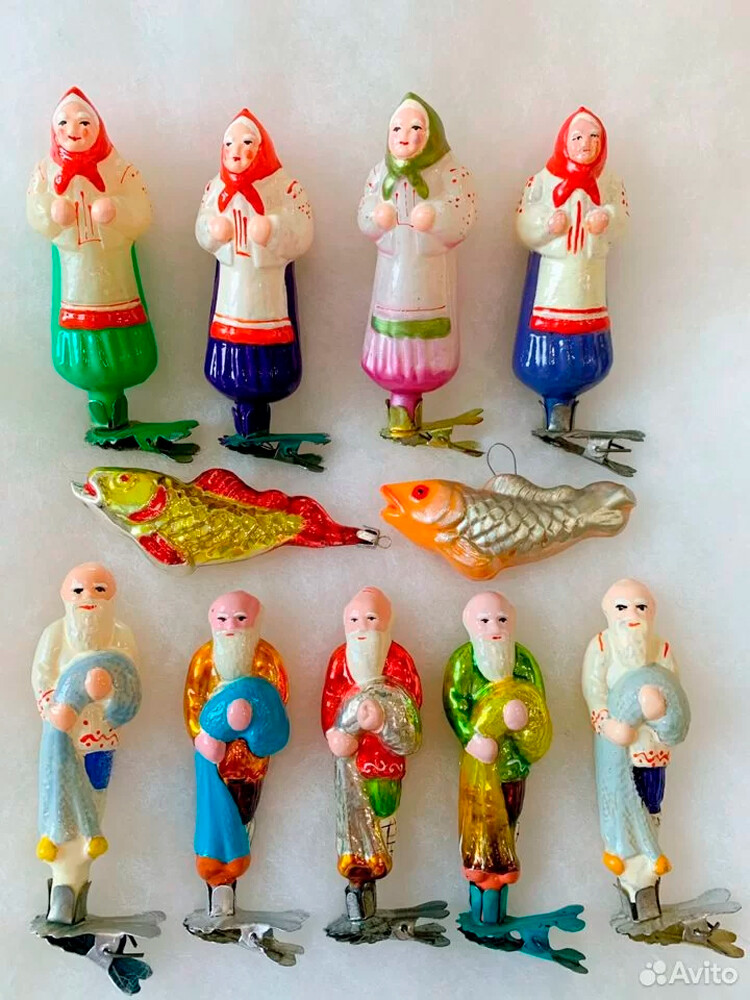
Tree toys depicting characters of Pushkin's fairy tail 'The tale of the Fisherman and the Fish'.
AvitoAnother set was dedicated to the short story ‘Cipollino’, by Gianni Rodari - despite its relative mass appeal, today a complete set can cost more than half a million rubles.
Ornaments in the form of a clock, the hands of which showed five minutes till midnight, were also very popular. A variety of spheres, figures of vegetables and fruits also appeared.
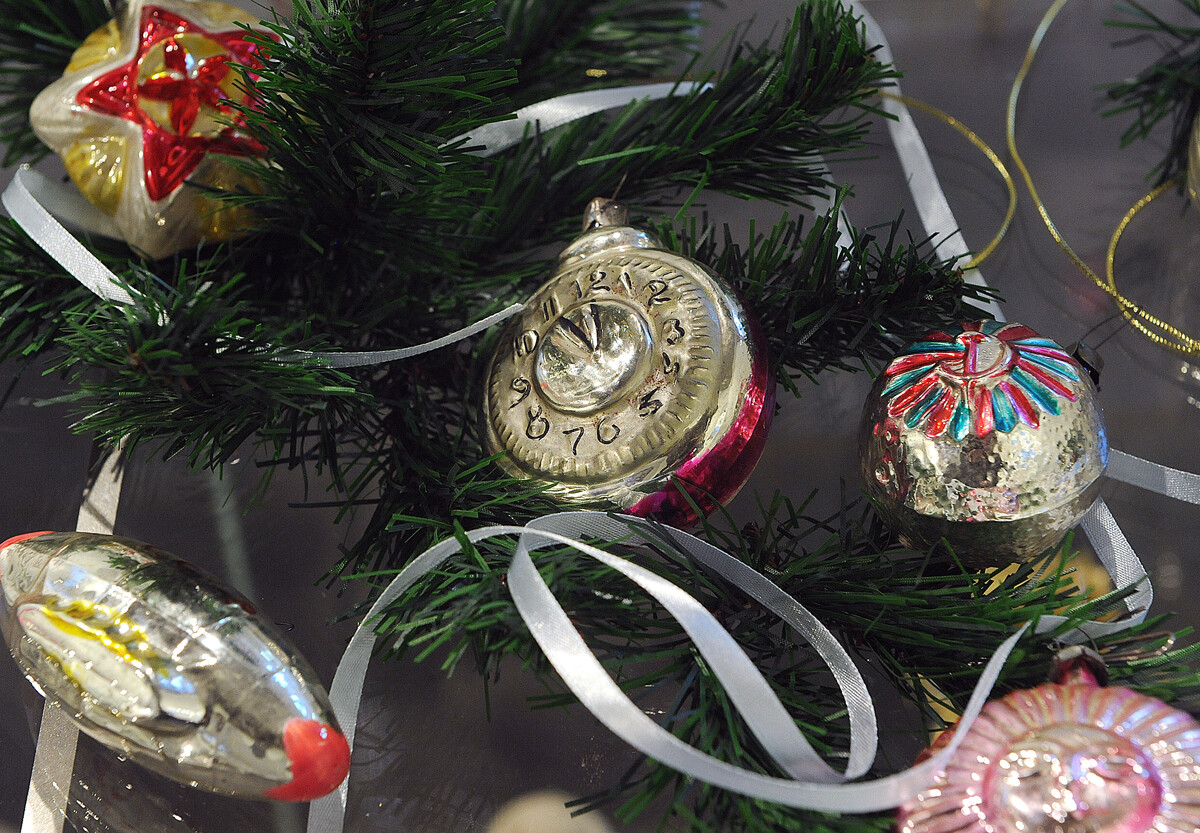
Tree toy in a form of a clock.
Максим Новиков /TASSFrom 1957 and throughout the 1960s, designers of Christmas tree decorations were inspired by major events - the launch of the first satellite and Yuri Gagarin’s flight into space. There were ornaments in the form of astronauts and rockets, and instead of the star on top of the Christmas tree sometimes there was a toy rocket.
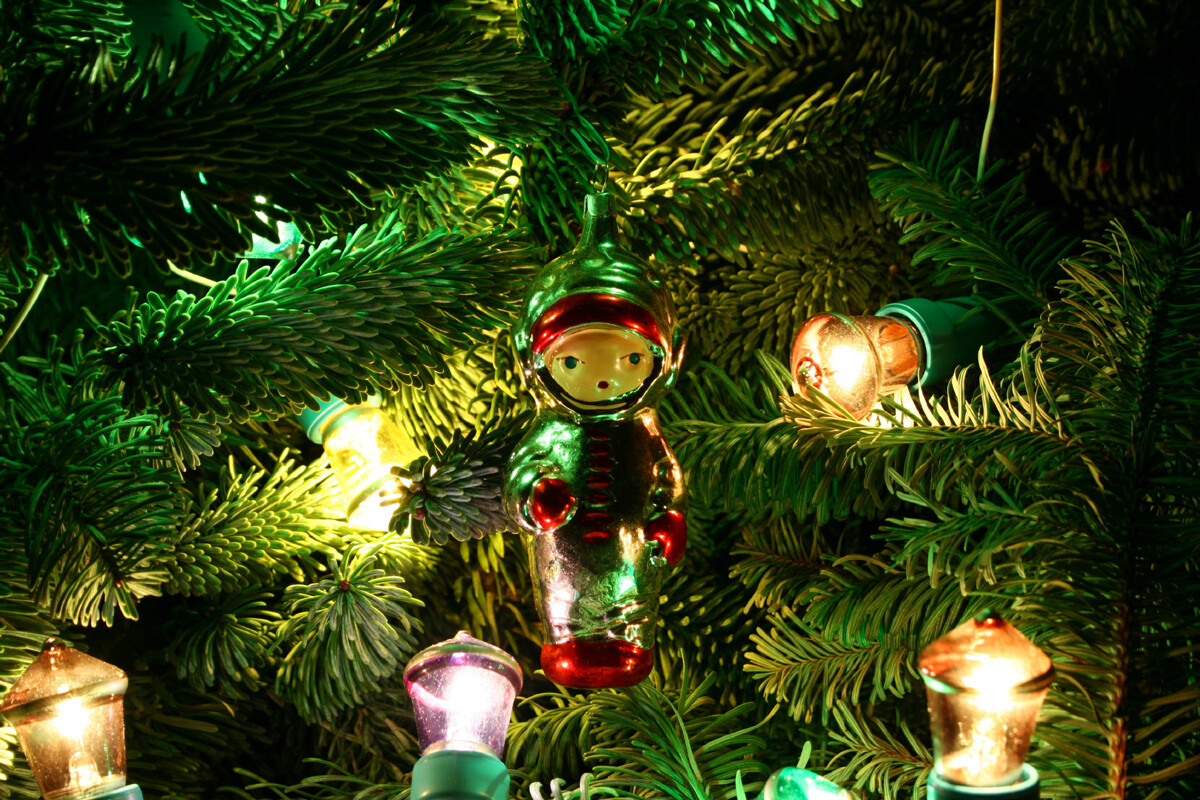
Tree toy 'Astronaut', 1960s.
Andrey Vukolov (CC BY-SA 3.0)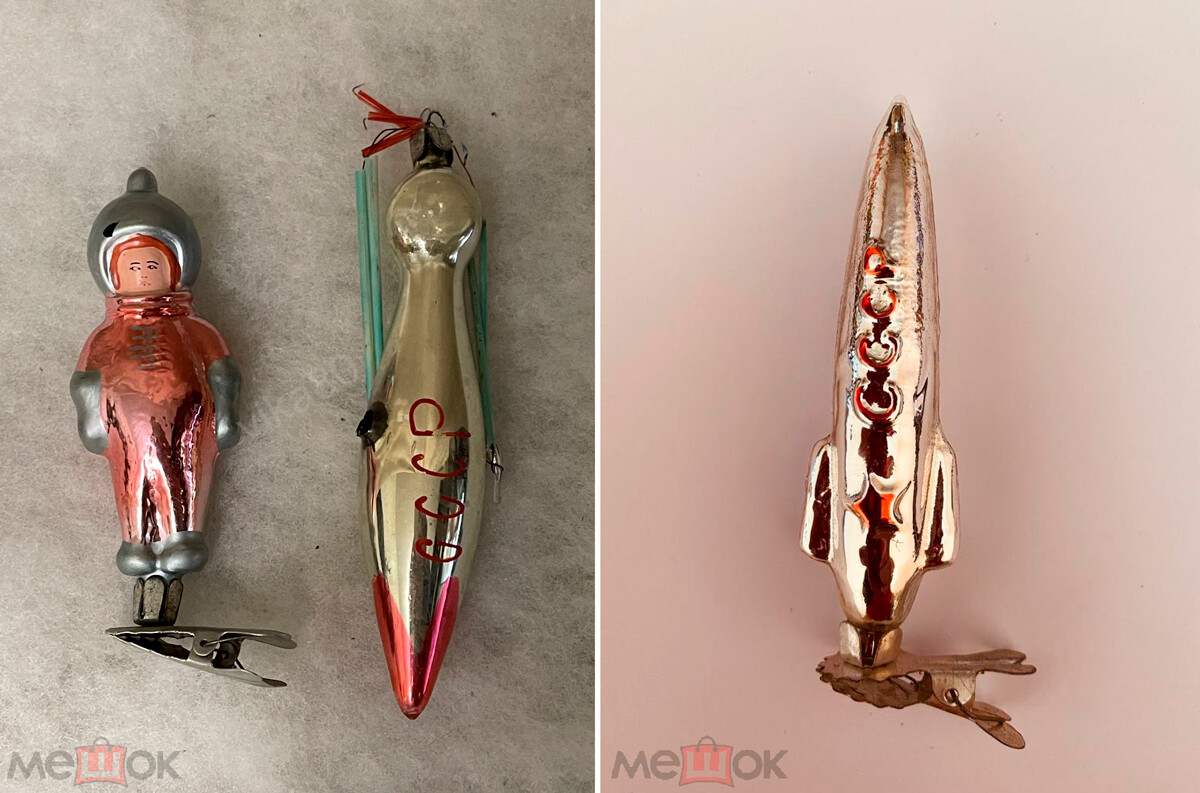
Space-themed tree decorations.
МешокWinnie-the-Pooh, Piglet, Donkey Eeyore and Owl appeared in the 1970s after the premiere and huge success of the Soviet cartoon based on the book by Alan Milne.

Toys devoted to Winnie-the-Pooh and Piglet.
МешокAnd after the 1980 Olympics in Moscow, Soviet Christmas trees were lit with the Olympic torch and the legendary teddy bear - the main symbol of those games.
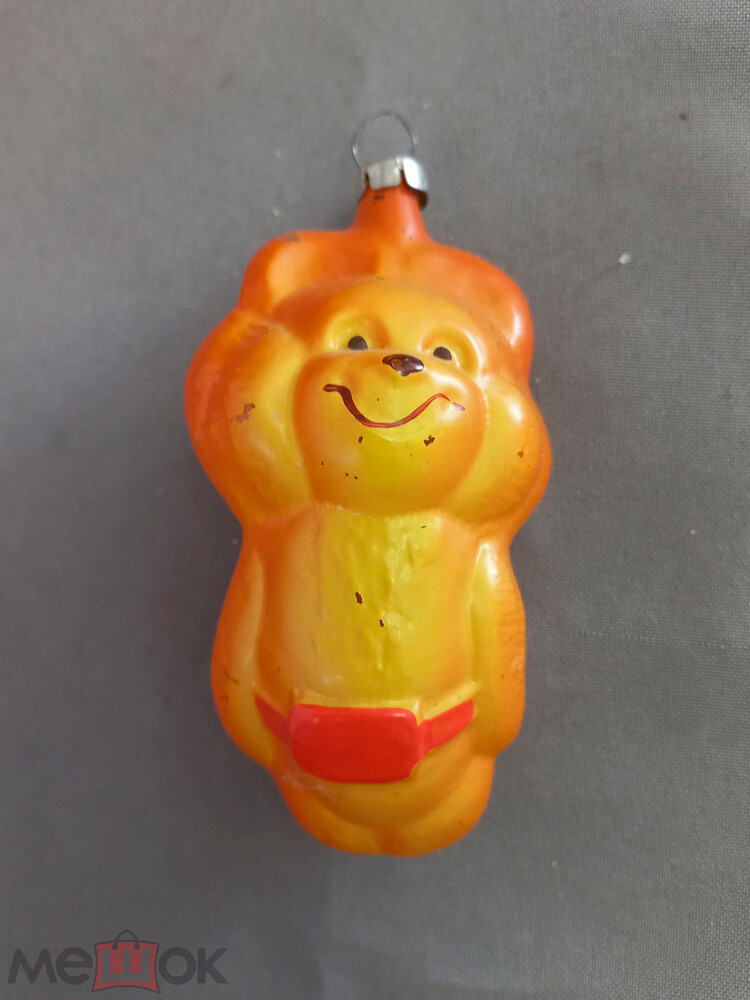
Olympic teddy bear.
МешокDear readers,
Our website and social media accounts are under threat of being restricted or banned, due to the current circumstances. So, to keep up with our latest content, simply do the following:
If using any of Russia Beyond's content, partly or in full, always provide an active hyperlink to the original material.
Subscribe
to our newsletter!
Get the week's best stories straight to your inbox